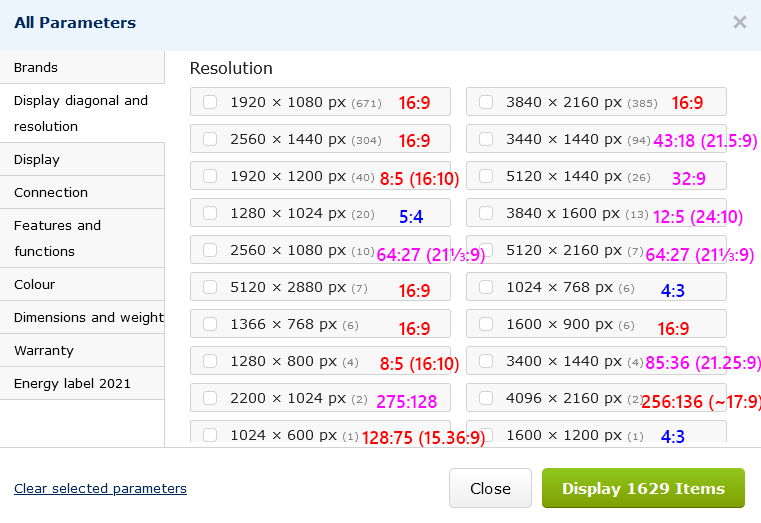

“Come with me if you want to live”


“Come with me if you want to live”
Wait, that’s a photo? I thought it was a stylized rendering at first. The colors are almost vaporwave.
deleted by creator


So who are the good guys, mind you telling? As far as I’m aware, currently it’s a choice between Chromium based browsers and Firefox and its forks. So really just 2 options in the grand scheme of things.
Same here, I liked seasons 1-3 better than books 1-3 but books 4-6 better than seasons 4-6. And then there’s the amazing books 7-9 which sadly didn’t get adapted at all.


Are you suggesting that Trump is a supe with superhuman healing abilities?


But I mean, it’s the same thing as this FB/IG case, no? Only worse because even if you pay, you still have ads.


The biggest Czech website (Seznam.cz) recently changed their policy and now force you to choose between: free tier with personalised ads or paid tier with anonymous ads. Yes, you’re reading it right, even if you pay, it doesn’t get rid of ads, they just stop tracking you. I have no idea whether it’s legal but the EU should definitely take a look.
Edit: Ok, I think they only offer you this choice when you’re using an account. I tried it in a private tab and it seems I can decline personalized ads there. Does that make it legal? If yes, then they’re some sneaky bastards.


Seriously, all the other photos from the event are pretty meh but this one is World Press Photo material.
*Laughs in Firefox*


Every sperm is sacred, every sperm is great. If a sperm is wasted, God gets quite irate.


Dude, what the hell you’re onto?
1280 x 800 is 16:10
That’s exact.
1280 x 720 is 16:9
Also exact.
1280 x 768 is also 16:10.
In the link you provided, it literally says it’s 5:3. It even has its own line in the infographics. And while the article is titled “List of common resolutions”, it looks more like an exhaustive list of almost any resolution that has been ever used in any kind of consumer device. It’s definitely not limited just to standard computer monitors so that table isn’t really that relevant to the topic of the discussion.
Also show me a monitor with the 1280 x 768 resolution that’s currently available on sale.
You’re picking up some extremely rare cases to make an argument that your initial statement about “usually different aspect ratio” was correct but that’s not how it works. That’s just moving goalposts.


Type without rhythm and it won’t attract the worm.


Nah there are more
5:4, 8:5, 21:9, 64:27. And more
I already mentioned 5:4 and 8:5 equals 16:10.
21:9 and 64:27 are just ultrawide formats which I also mentioned and you can’t really mistake those for 16:9, can you? Same goes for 5:4 and 4:3 which are rather square-ish (4:3 was typical for old CRT monitors and TVs).
And these aren’t exact. There’s fault tolerance, so to speak.
I don’t think “fault tolerance” means what you think it means.
You can have slightly different sizes rectangles between several different 16:9 monitors.
Are you telling me that there are monitors that don’t have square pixels? Or that the number of (square) pixels doesn’t give an exact 16:9 ratio?
Anyway, yes, there are more aspect ratios out there but the important thing is how common they are. I just looked at the biggest local e-shop and if I try to filter parameters by resolution, I get this:

The number in the parenthesis next to the resolution is the number of products. (Note that this is only showing 1609 out of the total 1629 items - if I scroll down, there are 20 other options which all have 1 product each so I took the liberty to ignore those as those are ultra rare items (and some of them aren’t even regular monitors but just some specialized displays. Even here, for example the 2200×1024px is an e-ink touch screen)).
I simplified each ratio to the simplest form, so those are exact ratios (but for some added a ratio with X:9 or X:10 in the denominator in parenthesis for easier comparison to those more standard formats). Turns out that 1379 out of 1609 monitors are exactly 16:9, so that’s 85.7%. The biggest variety are among the ultrawides which I colored in purple but again, those are pretty much unmistakable. Just like the 5:4 and 4:3 in blue.
So realistically you have to watch out for the red ratios where 1379 out of 1426 are 16:9, that’s 96.7%.
So I really wonder how you came to the conclusion that “monitors are usually a different aspect ratio to a TV”.
Now of course one e-shop isn’t a completely representative sample but I hope we can agree that the numbers will be in the right ballpark. Feel free to make your own statistics from a different source.
fault tolerance


monitors are usually a different aspect ratio to a TV
What? Aren’t like 90% of monitors and 99% of TVs 16:9? There are a few monitors that are 16:10, some extremely rare 5:4 and 4:3 and then there are the ultrawide monitors which are obviously a different aspect ratio but saying that monitors are “usually” a different aspect ratio is factually incorrect. If you’re deciding between a 4K TV and 4K monitor, then there’s no danger of accidentally buying something of different format.


It’s like Bizarro World of the Factorio universe. The more complex products are easier to manufacture than raw products. I also love the look of those scraps on belts getting fed into the recyclers. Can’t wait for what Scrapheap Challenges that will bring.


I mean, there’s /r/SubSimulatorGPT2 that’s been running for years… Although that one was at least hilarious to read because at that stage the AI was in the sweet spot of being simultaneously coherent while making total lapses in logic.
I’m from Europe and I already met one in my hometown. The other day, it even damaged scaffolding on the Powder Gate in Prague, while it was, hilariously, riding on the bed of a tow truck.
Edit: The individual approval itself is already highly controversial: https://www.wired.com/story/a-rubberized-cybertruck-is-ploughing-through-european-pedestrian-safety-rules/